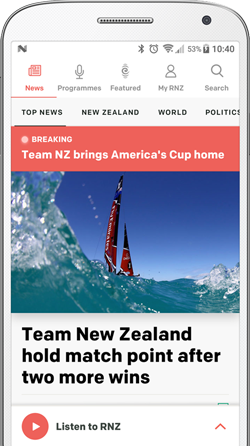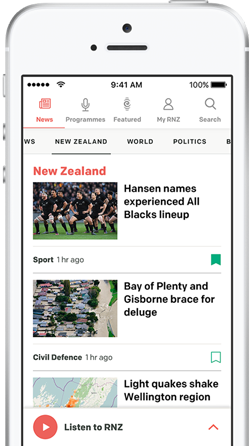
Shotover Wastewater Treatment Plant in Queenstown. Photo: Supplied / Queenstown Lakes District Council
The Queenstown Lakes District Council says that treated sewage being discharged into the Shotover River is well within its consent limits.
On Monday the council started pumping at least 12,000 cubic metres of treated wastewater into the river per day, using emergency powers.
The plan prompted community backlash and a protest after the confidential information was leaked by a councillor who was subsequently stripped of her committee roles.
On Thursday, the council published the first test results from samples taken immediately downstream of the UV disinfection stage at the Shotover Wastewater Treatment Plant.
It found E.coli levels were well below its consent limit, with the concentration levels falling below 10 colony-forming units per 100 millilitres.
The nationally accepted safe swimming level is 260 colony-forming units or less per 100 millilitres, which is the same as the council's consent limit.
The test results also showed total suspended solids were 14 milligrams per litre.
The council's consent required an annual mean of less than 30mpl and for 95 percent of results to be below 50mpl.
The council's infrastructure operations manager Simon Mason said the results reflected a well-operating treatment plant.
"In light of the discharge directly to the river, we will now be undertaking monitoring upstream and downstream of the discharge point to ensure we have a full understanding of any effects of the discharge.
"Any sampling completed further along the water's journey to the river are not reliable indicators of the actual treatment performance given they can be affected by external factors unrelated to the functioning of the plant.
"For example, animal faeces such as from birds and dogs are known to cause spikes in E.coli readings."
Samples would be sent to an external lab for analysis weekly, with compliance results shared with the Otago Regional Council on a monthly basis, in line with its existing resource consent.
Mason said it usually took about two weeks to process and the results would be made publicly available.
Treated sewage testing was usually done onsite daily, he said.
"These onsite tests are indicative of operational performance in that they would quickly show if there were any issues with the quality of wastewater at the end of the treatment process."
The council was expected to lodge a resource consent for the wastewater discharges before the end of the month.
Sign up for Ngā Pitopito Kōrero, a daily newsletter curated by our editors and delivered straight to your inbox every weekday.





